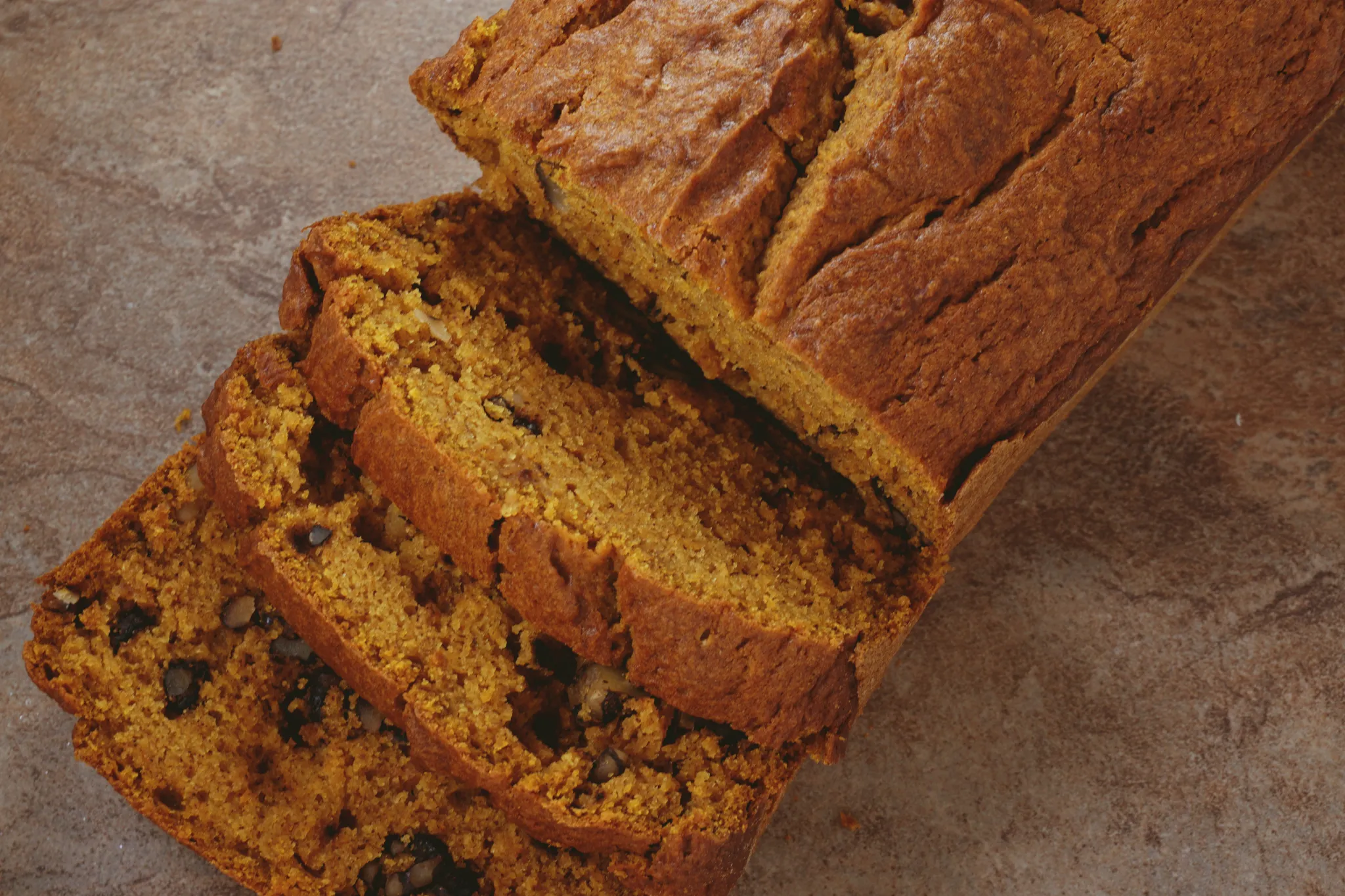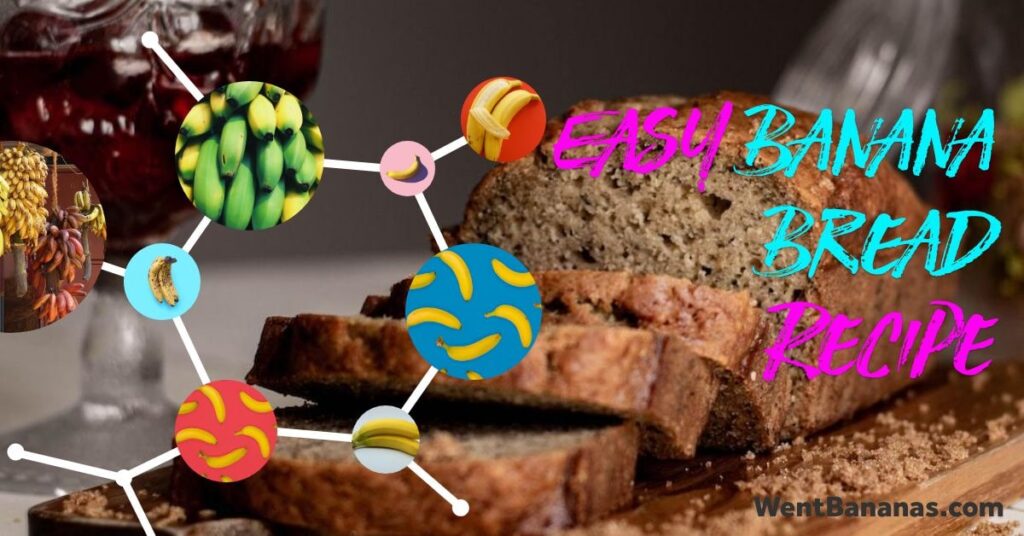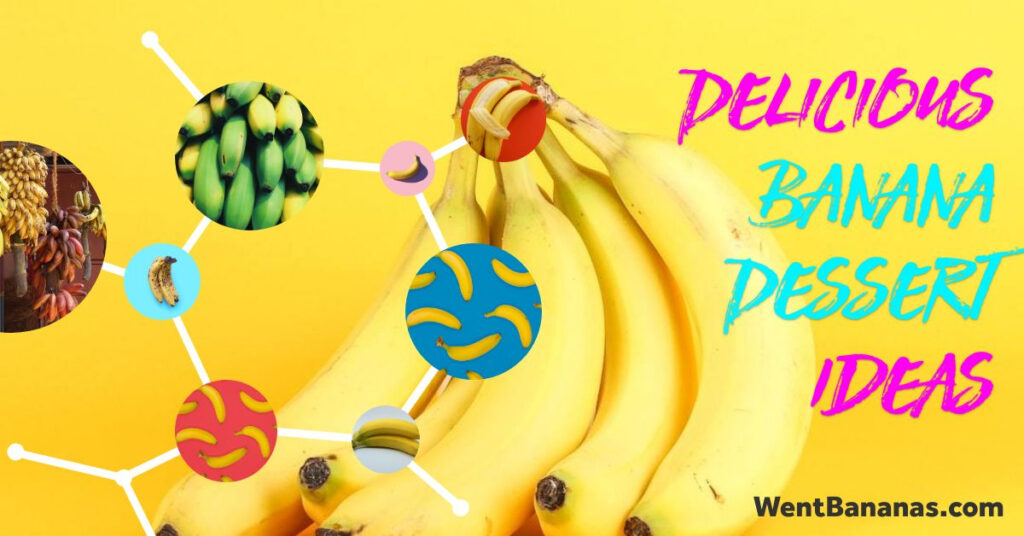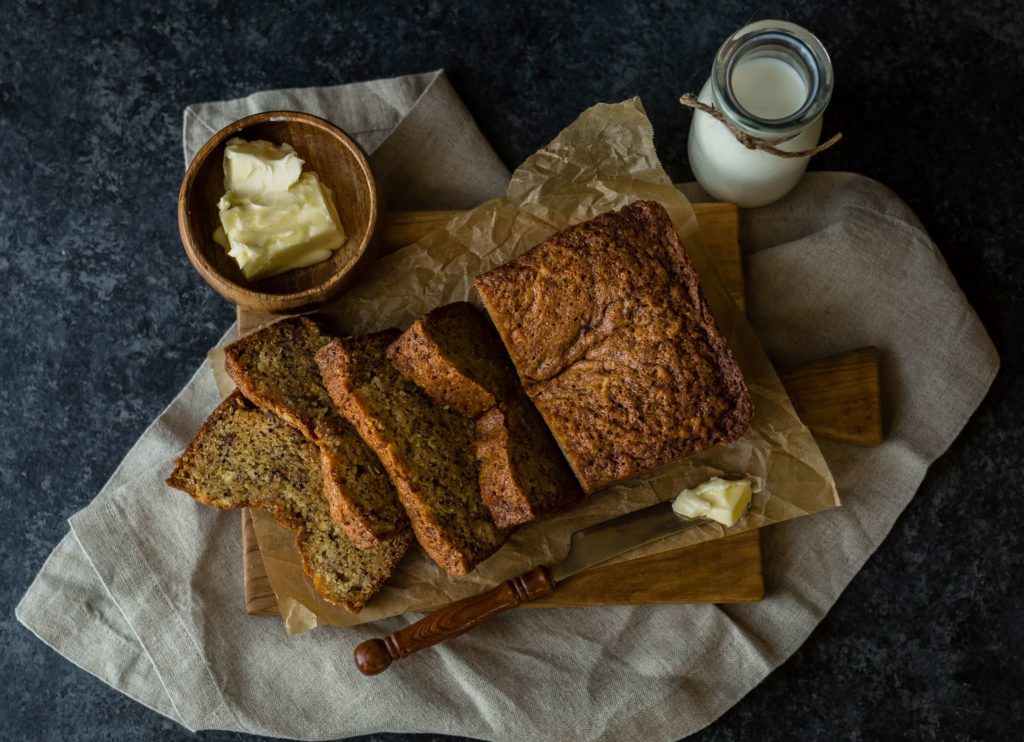
Are you craving a delicious and moist banana bread but don’t have any vanilla extract on hand? Don’t worry, we’ve got you covered! In this article, we’ll share a fantastic banana bread recipe that doesn’t require any vanilla extract. You’ll be able to enjoy the comforting flavors of banana and warm spices without needing to make a trip to the store. Get ready to whip up a batch of this irresistible treat in no time!
There’s nothing quite like the aroma of freshly baked banana bread filling your kitchen. And the best part? You don’t need vanilla extract to achieve that mouthwatering flavor. Our no-vanilla banana bread recipe is a game-changer, using a combination of other ingredients to enhance the natural sweetness and richness of the bananas. You’ll be amazed at how simple and delicious this recipe is, and you’ll never miss the vanilla extract!
Whether you’re out of vanilla extract or simply prefer to skip it in your baking, our banana bread recipe without vanilla extract is a must-try. With just a few staple ingredients, you’ll be able to create a moist and flavorful loaf that will satisfy your cravings. So grab those ripe bananas from your countertop and let’s get baking! Your taste buds will thank you.
Why Omit Vanilla Extract in Banana Bread Recipe?
When it comes to baking banana bread, many recipes call for vanilla extract to enhance the flavor. However, there are times when you may not have vanilla extract on hand or simply prefer to omit it from your recipe. Rest assured, you can still create a delicious banana bread without it. Here’s why you might choose to skip the vanilla extract:
1. Emphasizing the Natural Flavor of Bananas: One of the main reasons to omit vanilla extract is to allow the natural sweetness and richness of the bananas to shine through. By omitting vanilla extract, you can fully appreciate the delicious flavor of ripe bananas in your bread.
2. Simplifying the Recipe: Vanilla extract is not a pantry staple for everyone. Omitting it from the recipe means you won’t have to worry about running out or making an extra trip to the store. It’s a simple way to streamline the baking process and still enjoy a tasty treat.
3. Allergy or Sensitivity: Some individuals may have allergies or sensitivities to vanilla extract. By omitting it from the recipe, you can ensure that your banana bread is safe for everyone to enjoy.
4. Experimenting with Different Flavors: Omitting vanilla extract opens up opportunities to get creative with other flavors. You can add spices like cinnamon, nutmeg, or cardamom to enhance the taste of your banana bread. You can also add a variety of mix-ins like chocolate chips, nuts, or dried fruit to customize your bread to your liking.
Alternative Flavors to Replace Vanilla Extract in Banana Bread
If you’re looking to add a twist to your banana bread recipe or simply don’t have vanilla extract on hand, don’t worry! There are plenty of alternative flavors that can enhance the taste of your banana bread. Experimenting with different flavors can be a fun way to customize your recipe and create a unique treat. Here are some delicious options to consider:
1. Cinnamon:
Cinnamon is a classic spice that pairs beautifully with the natural sweetness of bananas. It adds warmth and depth to your banana bread, giving it a cozy and comforting flavor. Simply add a teaspoon or two of ground cinnamon to your recipe to infuse it with this aromatic spice.
2. Nutmeg:
Nutmeg has a slightly sweet and nutty flavor that complements bananas wonderfully. It adds a subtle richness and complexity to your banana bread. Start with a quarter teaspoon of ground nutmeg and adjust according to your taste preferences.
3. Almond Extract:
Almond extract is a fantastic alternative to vanilla extract, especially if you enjoy the nutty flavor. It adds a distinct almond taste that pairs beautifully with the bananas. Use about half a teaspoon of almond extract in your recipe for a delightful twist.
4. Lemon Zest:

For a refreshing and citrusy twist, try adding some lemon zest to your banana bread batter. The bright and tangy flavor of the lemon zest cuts through the sweetness of the bananas, creating a balanced and delightful taste. Add the zest of one lemon to your recipe for a burst of flavor.
5. Coconut:
If you’re a fan of tropical flavors, consider adding some shredded coconut to your banana bread. The coconut adds a subtle sweetness and texture that complements the bananas perfectly. Sprinkle about half a cup of shredded coconut into your batter and enjoy the tropical vibes.
Remember, these alternative flavors are just suggestions. Feel free to get creative and mix and match different flavors to find your favorite combination. Whether you prefer a warm and spicy banana bread or a zesty and refreshing one, there’s a flavor out there for everyone. So, grab those ripe bananas and get baking!
Importance of Ripe Bananas in Banana Bread Recipe
Bananas are a staple in many households, loved for their natural sweetness and versatility in various dishes. When it comes to baking banana bread, using ripe bananas is key to achieving the perfect flavor and texture. In this section, we’ll explore the importance of ripe bananas in a banana bread recipe and how they contribute to a delicious end result.
1. Enhanced Flavor: Ripe bananas are sweeter and have a more pronounced flavor compared to unripe ones. The natural sugars in ripe bananas caramelize during baking, adding a rich and sweet taste to the bread. This depth of flavor is what makes banana bread so irresistible.
2. Moisture and Texture: Ripe bananas are softer and easier to mash, allowing them to blend smoothly into the batter. The moisture content in ripe bananas helps keep the bread moist and tender. It also adds a pleasant, slightly dense texture that makes each bite satisfying.

« A Foolproof Guide to Cooling and Serving Your Delicious Homemade Banana Bread
Delicious Moist Banana Muffin Recipe: Easy and Flavorful with 2 Ripe Bananas »
3. Natural Sweetness: Ripe bananas provide natural sweetness to the bread, reducing the need for additional sugar. This not only makes the bread healthier but also allows the banana flavor to shine through without being overpowered by excessive sweetness.
4. Binding Agent: The natural sugars and moisture in ripe bananas act as a binding agent, helping to hold the ingredients together. This is particularly important when you’re not using vanilla extract, as it helps compensate for the lack of viscosity and binding properties that vanilla extract provides.
Remember, the key to a successful banana bread recipe lies in using ripe bananas. Look for bananas with yellow peels that are speckled with brown spots. These bananas are at their peak ripeness and will yield the best results in your banana bread.
Now that you understand the importance of ripe bananas, it’s time to dive into the various flavors and mix-ins you can experiment with to take your banana bread to the next level. But before we do that, let’s take a look at how the choice of flour can impact the texture of your banana bread.
The Perfect Amount of Sugar in Banana Bread without Vanilla Extract
When it comes to baking banana bread without vanilla extract, finding the right balance of sweetness is key. While vanilla extract can add a subtle depth of flavor, it’s not the only ingredient that can make your banana bread delicious. In fact, the natural sweetness of ripe bananas is often enough to satisfy your taste buds.
To achieve the perfect amount of sugar in your banana bread, it’s important to consider the ripeness of your bananas. Ripe bananas not only offer a stronger flavor but also a higher sugar content. As bananas ripen, their starches break down into sugars, resulting in a sweeter taste. This means that you can reduce the amount of added sugar in your recipe without sacrificing flavor.
A general rule of thumb is to use about 1/2 to 3/4 cup of sugar for every 1 cup of mashed bananas. This amount can vary depending on your personal preference and the sweetness of your bananas. If you prefer a sweeter bread, you can add a bit more sugar, but be cautious not to overpower the natural sweetness of the bananas.
It’s also worth mentioning that the type of sugar you use can impact the flavor and texture of your banana bread. While white granulated sugar is a common choice, you can also experiment with alternatives like brown sugar or even honey for a different taste profile. Just keep in mind that different sugars may affect the moisture level and texture of the bread, so you might need to adjust your recipe accordingly.
By finding the perfect amount of sugar in your banana bread, you can create a delicious treat that highlights the natural sweetness of ripe bananas without the need for vanilla extract. So, next time you’re baking banana bread, don’t be afraid to play around with the amount and type of sugar to find your own perfect balance.
Tips for Achieving Moist Banana Bread without Vanilla Extract

When it comes to making banana bread without vanilla extract, there are a few tips and tricks that can help you achieve a moist and flavorful result. Here are some suggestions to enhance your banana bread baking experience:
1. Use Ripe Bananas: Ripe bananas are the key to a delicious and moist banana bread, especially when you’re not using vanilla extract. The riper the bananas, the sweeter and more flavorful they become. Look for bananas with yellow peels speckled with brown spots. These bananas are perfectly ripe and will provide the best flavor and moisture to your bread.
2. Enhance the Flavor: Since we’re skipping the vanilla extract, you can experiment with other flavors to enhance the taste of your banana bread. Consider adding a teaspoon of cinnamon or nutmeg for a warm and aromatic touch. You can also try adding a tablespoon of honey or maple syrup to complement the natural sweetness of the bananas.
3. Add Moisture with Sour Cream or Yogurt: To ensure your banana bread remains moist, you can substitute some of the butter or oil in the recipe with sour cream or yogurt. These ingredients add moisture and richness to the batter. Replace about half of the fat called for in the recipe with an equal amount of sour cream or yogurt.
4. Mix in Some Texture: Another way to elevate your banana bread without vanilla extract is by adding some texture with mix-ins. Consider adding chopped nuts, such as walnuts or pecans, for a crunchy element. You can also toss in some chocolate chips or dried fruit for a burst of sweetness.

5. Don’t Overmix: When mixing the batter, be careful not to overmix. Overmixing can lead to a dense and tough banana bread. Mix the ingredients just until they are combined. A few lumps are okay, as they will disappear during baking.
By following these tips, you can create a moist and delicious banana bread without the need for vanilla extract. Remember to use ripe bananas, experiment with flavors, add moisture with sour cream or yogurt, mix in some texture, and avoid overmixing. Enjoy your homemade banana bread with a cup of coffee or tea for a delightful treat any time of the day.
Conclusion
Now that you have learned these tips and tricks for making delicious banana bread without vanilla extract, you can confidently whip up a batch anytime you have ripe bananas on hand. By using ripe bananas, you’ll enhance the flavor and moisture of your bread, resulting in a truly delightful treat. Don’t be afraid to get creative and experiment with different flavors and mix-ins to personalize your banana bread to your liking. Remember to add moisture to your batter by incorporating sour cream or yogurt, and be careful not to overmix, as this can lead to a dense and dry loaf.
So go ahead, gather your ingredients, preheat your oven, and enjoy the process of creating a warm and comforting loaf of homemade banana bread. And once it’s baked to perfection, don’t forget to pair a slice with a steaming cup of coffee or tea for the ultimate indulgence. Happy baking!











